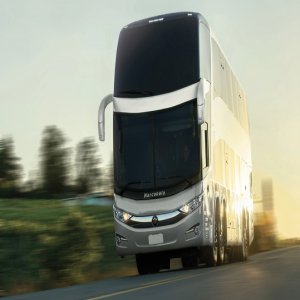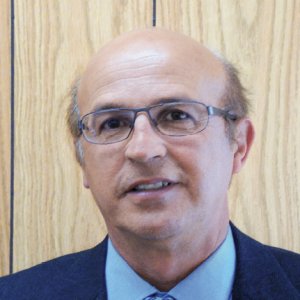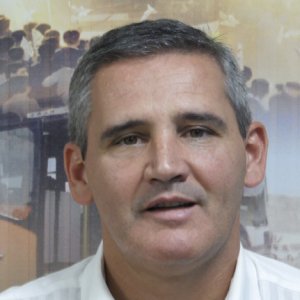Lightweight Solutions Enhance Efficiency

STORY INLINE POST
Q: How is BASF preparing for the new trends that have appeared in the automotive sector?
A: Firstly, the weight saving trend in the automotive industry is not only relatively unchartered territory, but is becoming increasingly important, as CO2 emissions and fuel economy must comply with more stringent requirements. BASF offers a broad portfolio of lightweight solutions ranging from engineering plastics to foams and composite systems, which reduce weight without compromising the strength of the structure. The price of increased mobility is higher emissions, so we work to minimize the ecological impact with fuel additives that reduce these, while increasing efficiency. As the global leader in catalysis, we help our customers meet the toughest emission regulations with cost-effective solutions. Improved fuel economy is one of the most important trends in the automotive industry, but energy consumed by heat, ventilation, and air conditioning systems in vehicles contributes to a significant increase in fuel usage. To combat this, BASF’s materials for solar heat management and thermal insulation optimize heat flow through vehicles, increasing the efficiency of auxiliary systems and improving comfort for the driver. E-mobility is also altering the outlook, triggering the development of alternative powertrain vehicles. In response, BASF is developing materials and technology for lithium-ion batteries, as well as future powertrain concepts. Lastly, the notable trend toward improved safety and comfort has led to the development of components for braking, airbag housings, and bumper stiffeners. Moreover, our noise, vibration, and harshness solutions improve the overall consumer experience while increasing driving comfort and safety.
Q: What nanotechnology opportunities is BASF exploring in the automotive sector?
A: By using nanotechnology, we can achieve increased design freedom, lower reject rate, minimal investment costs for production tools, and energy savings of up to 20%. BASF is becoming more efficient thanks to nanotechnology, with the key to this innovation lying in the addition of finely dispersed nanoparticles. The particle size reached 100 nanometers, modifying the application behaviors and the rheology of some products, subsequently revolutionizing the automotive industry for BASF partners. In Mexico, the company is selling nanotechnology via Ultradur High Speed and Ultramid High Speed products. BASF is completing the evaluation process to work on a focus development program with a number of educational institutes in order to create a partnership with OEMs, academia, government, and R&D centers
Q: What made the development of the four-way catalytic converter possible and how does it differ from the traditional three-way converter?
A: BASF’s EMPRO three-way conversion (TWC) catalyst technology features a patented precious metal alloy of platinum, palladium, and rhodium that significantly outperforms conventional three-way conversion catalysts in the oxidation of hydrocarbons (HC) and carbon monoxide (CO). This employs BASF’s patented washcoat technology, which places the precious metals within the washcoat, resulting in the optimal use of precious metals, lower cost and higher effectiveness, and higher CO, HC and nitrogen oxides (NOx) conversions. BASF’s TWC catalysts have a lower light-off temperature, offer high temperature stability, minimize hydrogen sulfide emissions without using nickel, possess outstanding resistance to lead, and have a stable oxygen storage function to help OEMs meet On-Board Diagnostics II requirements. On the other hand, the innovative single-component EMPRO four-way conversion (FWC) catalyst can remove particulate matter, as well as CO, HC and NOx from gasoline-engine exhausts. Upcoming Euro 6 and US Tier 3 regulations will enforce a more stringent control of particulate matter emissions from gasoline-powered vehicles. Therefore, BASF has developed innovative FWC catalyst technologies in global R&D centers, which can be applied in a system along with a standard TWC, as a close-coupled, under-floor, or even as a FWC-only device for a fully integrated system. Due to increasing OEM and Tier 1, 2 and 3 investments, Mexico is considered an important target for these products.
Q. As sustainability becomes increasingly important in the automotive sector, how are BASF’s R&D efforts directed at making processes cleaner?
A: BASF has a long tradition in sustainability. In the 1980s and 1990s, nitrogen emissions were reduced by nearly 90%, and 17 million MWh were saved per year through Production Verbund. Since 2014, BASF has steered its portfolio toward sustainability to systematically review and evaluate relevant aspects of the approximately 50,000 product applications in the company’s portfolio. The benefit of this externally validated process is the possibility of measuring the products’ contribution to sustainability within various markets. Environmental and social responsibility goes hand in hand with running a profitable business, so BASF has embedded sustainability in the corporate mission, with a mission statement boasting that “We create chemistry for a sustainable future”.























